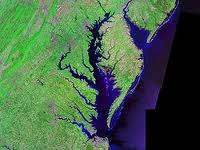 Governor Bob McDonnell recently announced significant progress in cleaning up the Chesapeake Bay. We applaud his leadership and that of his appointees managing this effort.
Governor Bob McDonnell recently announced significant progress in cleaning up the Chesapeake Bay. We applaud his leadership and that of his appointees managing this effort.
Among Virginia’s accomplishments is a massive reduction of nutrients going into the Bay from farms and fields. What is particularly pleasing to see is that these farm-related reductions are far and away the most cost-efficient efforts to date.
In many ways, the Thomas Jefferson Institute for Public Policy has claim to championing this agricultural success. Recognizing the outstanding work of the Colonial Soil and Water Conservation District, and their professional staff, TJI marshaled support for broad expansion of the Colonial District’s highly successful efforts to encourage the use of no-till crop management as the premier element of farm nutrient management plans.
The Department of Conservation and Recreation took note and under the leadership of its Director, David Johnson, no-till has become the dominant farming technique throughout the commonwealth.
To place this effort into perspective, no-till farming reduces nitrogen, phosphorous and sediment runoff from fields by more than 95 percent, a degree of control even advanced wastewater treatment plants cannot meet.
We are, however, a long way from meeting Chesapeake Bay goals. While the Jefferson Institute supports continuing efforts to reduce nutrient flows into the Bay, it also recognizes that governments simply don’t have the funds to apply pollution controls at all wastewater plants. The Institute believes Virginia needs to take a new approach.
We sometimes forget that the Bay is a myriad of ecosystems and that nutrients help define those ecosystems. Science shows that by balancing nutrients, including by adding missing nutrients, we can shift the Bay from a blue-green algae swamp into a diatom feeding ground. Instead of trying to maintain our current fish populations, we could be making efforts to increasing those populations by many many times.
The Bay needs nitrogen and phosphorus to feed the fish food chain. Rather than try to prevent their entry into the Bay, government policy would be better focused to add the missing nutrients, such as silicon, that would dramatically expand the fish food chain. And, at the same time, this would dramatically reduce the blue-green algae and the resultant dead zone caused by those algae.
We praise the Secretary of Natural Resources for his successes to date and remain committed to working with him and his team to launch the next phase – turning the Bay into a cleaner economic and recreational asset for our state and every state that borders this incredible body of water.

Email this author
- The Most Progressive Budget in Virginia’s History - December 21, 2019
- When is a Clean Water Act Permit Needed? - December 21, 2019
- Should U.S. Consider Modern Monetary Theory to Improve Economy? - December 21, 2019
